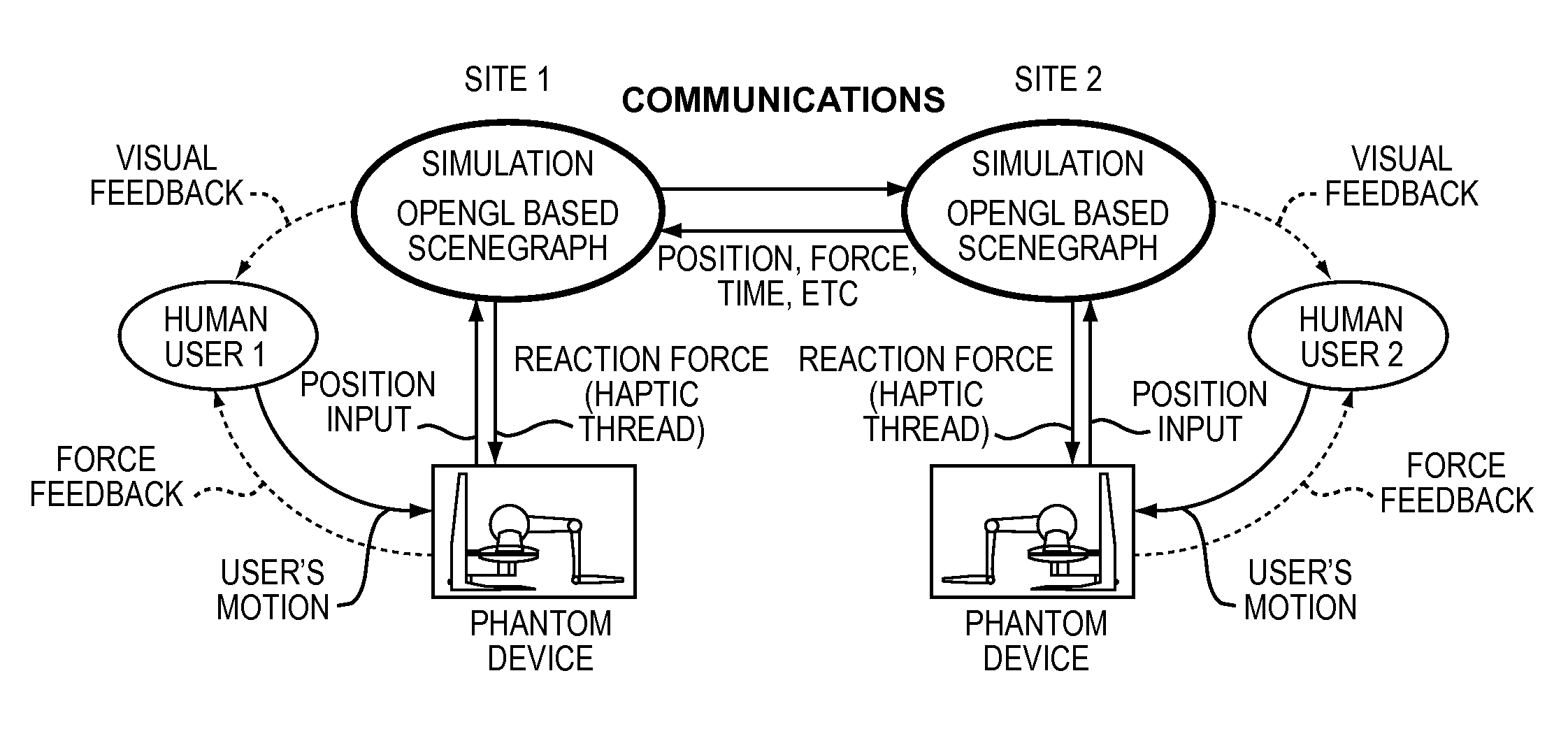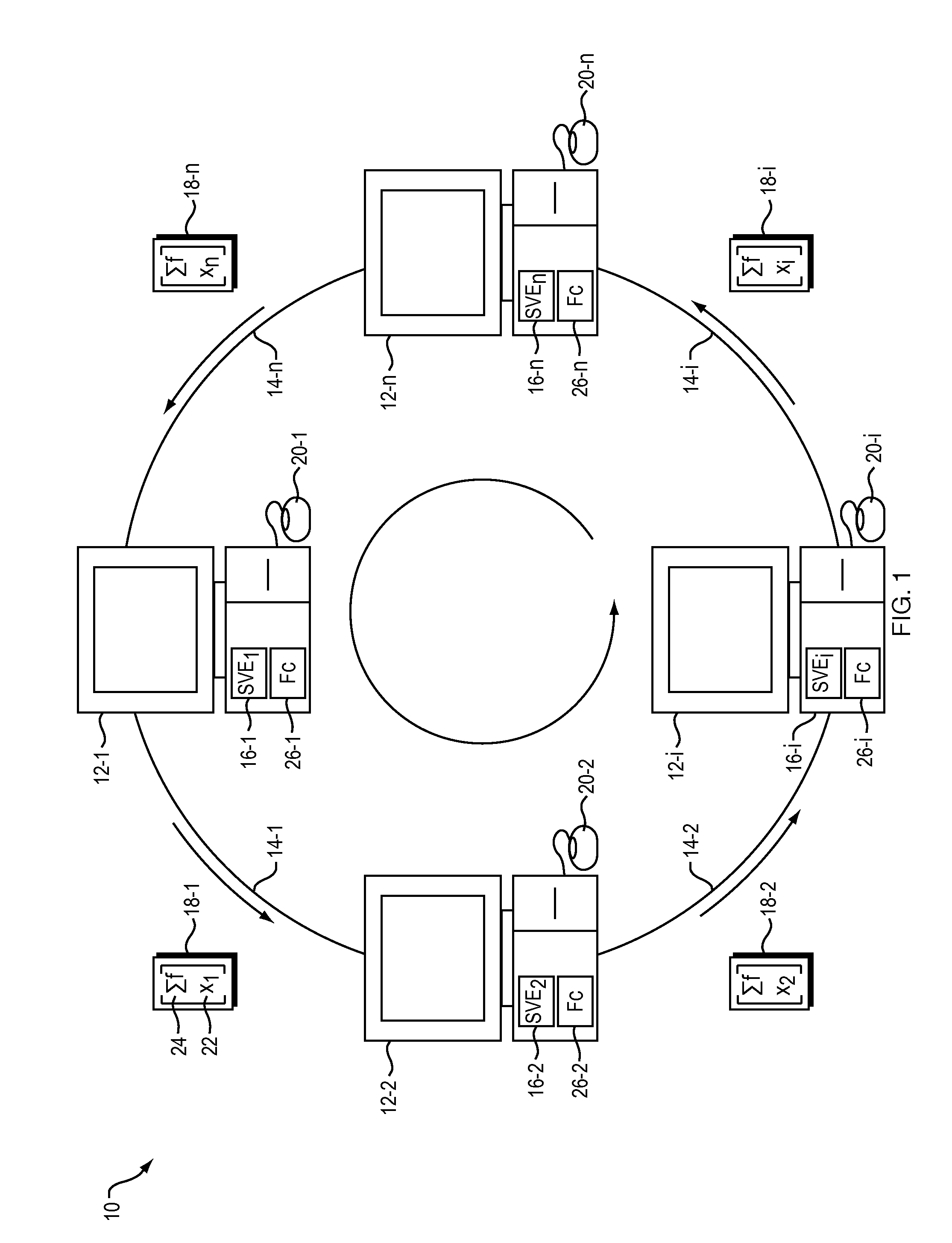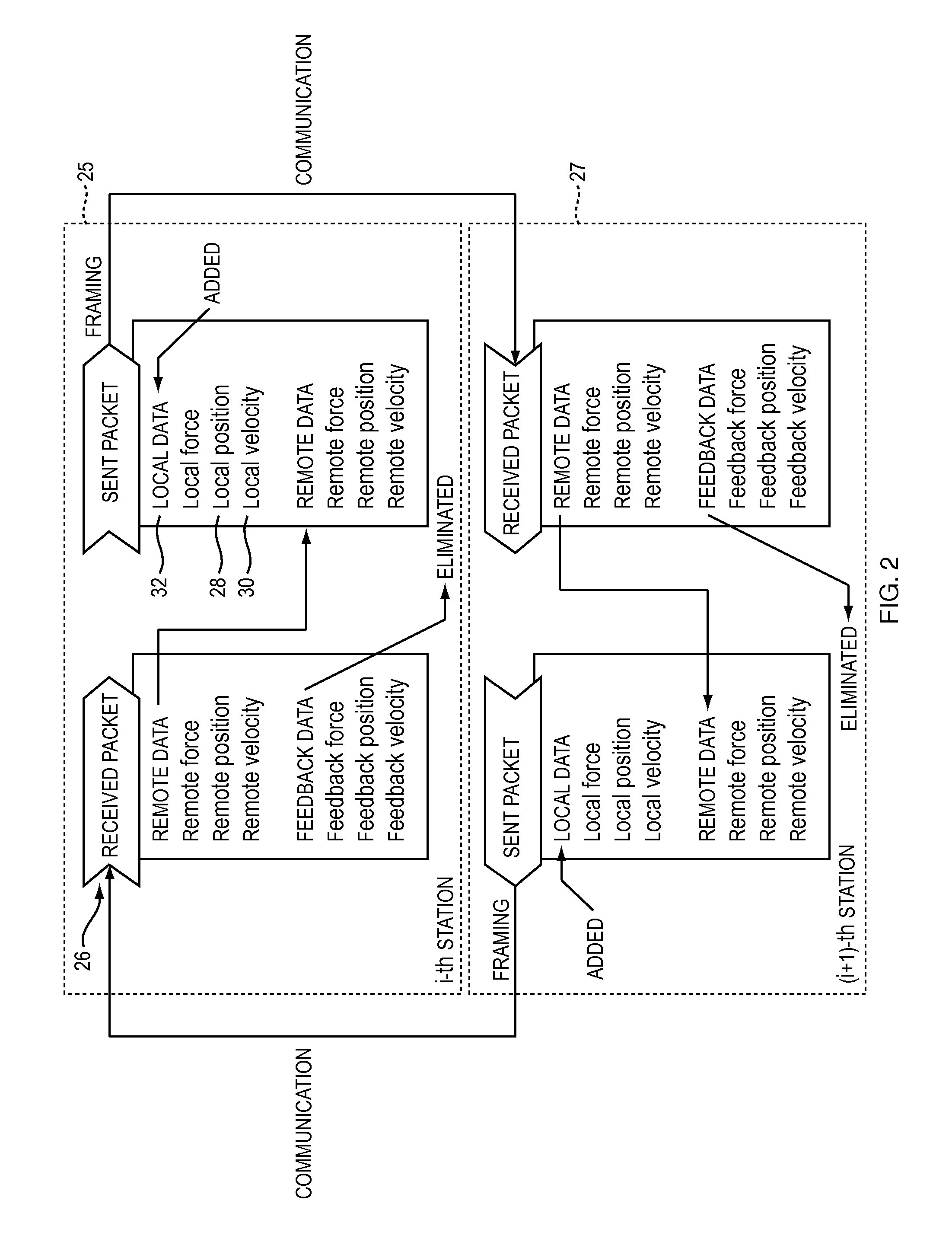System for and method of motion and force synchronization with time delay reduction in multi-user shared virtual environments
a technology of shared virtual environments and motion and force synchronization, applied in adaptive control, data processing applications, instruments, etc., can solve problems such as poor responsiveness, lag, and sluggish and erratically responding, and achieve high consistency
- Summary
- Abstract
- Description
- Claims
- Application Information
AI Technical Summary
Benefits of technology
Problems solved by technology
Method used
Image
Examples
Embodiment Construction
[0022]I. Overview
[0023]With reference to FIG. 1, the present invention provides a computerized system and feedback control method for providing physically realistic computer simulations in multi-user shared virtual environments (SVEs) 16-1 to 16-n being simulated at each of a plurality of geographically separated computers 12-1 to 12-n in a data communications network 10 having associated varying time delays inherent in data communications links 14-1 to 14-n between the computers. The present invention enables each user using one of the computers (or “participants”) 12-1 to 12-n an immediate interaction with virtual objects in the SVEs 16-1 to 16-n while maintaining consistency within a tolerable bound (a maximum tolerable delay) between the users. When a user interacts with the locally simulated synchronous model of the SVE including both static and dynamic portions, such as through input devices such as haptic devices 20-1 to 20-n, for example, a local change in the state of a dyn...
PUM
 Login to View More
Login to View More Abstract
Description
Claims
Application Information
 Login to View More
Login to View More - R&D
- Intellectual Property
- Life Sciences
- Materials
- Tech Scout
- Unparalleled Data Quality
- Higher Quality Content
- 60% Fewer Hallucinations
Browse by: Latest US Patents, China's latest patents, Technical Efficacy Thesaurus, Application Domain, Technology Topic, Popular Technical Reports.
© 2025 PatSnap. All rights reserved.Legal|Privacy policy|Modern Slavery Act Transparency Statement|Sitemap|About US| Contact US: help@patsnap.com



